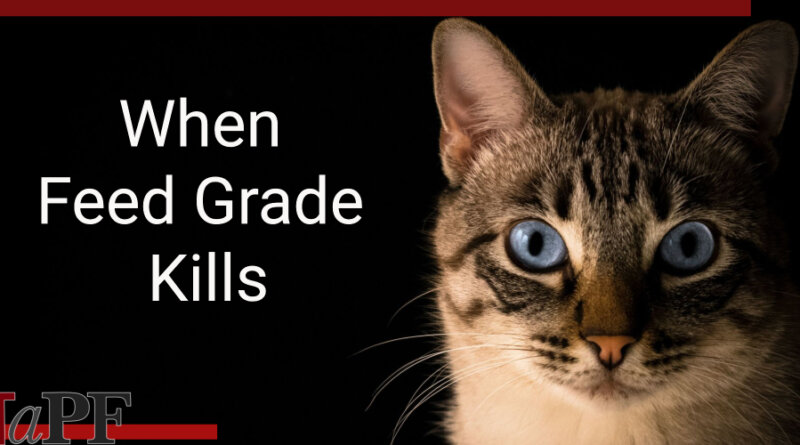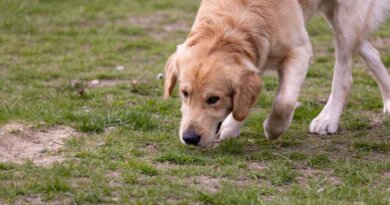Avian Influenza Infected Cat Foods – Truth about Pet Food
The PetFoodIndustry.com website reports that cats in numerous countries have died due to contracting an avian influenza from their pet food – the strain H5N1 was found. Three cats in South Korean shelters have died, several more have been have been sickened. In Poland, twenty-five cats tested positive for H5N1 avian influenza, fourteen cats were euthanized, eleven more have died.
About Highly Pathogenic Avian Influenza: “a subtype of the virus. It can cause severe illness and high mortality rates in domestic poultry and wild birds. The viruses can devastate poultry industries and have economic repercussions due to trade restrictions. Some varieties, including H5N1, can cross species barriers and may cause severe illnesses in mammals.”
These cat illnesses and deaths mean that pet food manufacturers in numerous countries were including/are including poultry infected with the “highly pathogenic avian influenza” as ingredients.
How could this happen? Feed grade ingredients. Could this happen in the US? Yes.
U.S. federal law (the Federal Food Drug and Cosmetic Act) declares that any food (human or animal) that contains any part of a diseased animal or animal that died other than by slaughter is adulterated – illegal. Federal laws prohibit non-USDA inspected and passed animals from being utilized as food/food ingredients in order to prevent avian influenza and other diseases being spread through food (human and animal food).
However, the FDA Center for Veterinary Medicine (CVM) directly ignores this federal law with pet food/animal food. The FDA CVM’s current position: “We do not believe that the use of diseased animals or animals that died otherwise than by slaughter to make animal food poses a safety concern and we intend to continue to exercise enforcement discretion.” When asked to provide scientific evidence to validate FDA CVM’s ‘belief that the use of diseased animals or animals that died otherwise than by slaughter’ poses no safety concern in pet food, the Agency failed to provide any science.
While FDA is the governing agency over pet food, the USDA is the governing agency over US poultry farms that supply pet food poultry ingredients. The USDA has multiple webpages and documents providing poultry farmers with assistance on what to do if their farm is infected. “If your flock is infected with highly pathogenic avian influenza, the U.S. Department of Agriculture will provide indemnity and compensation for some of your losses and costs.”
Of concern to U.S. pet owners, the USDA states: “Disposal methods include composting, onsite burial, incineration, rendering and landfilling.”
Yes…the USDA allows culled flocks of highly pathogenic avian influenza contaminated birds to be rendered, and the FDA allows the diseased animals to be included in pet food/animal feed – with no warning or disclosure to pet food consumers.
Just like in the US, pet food is frequently used to dispose of sick, non-slaughtered animals in countries all over the world (feed grade ingredients). Though we cannot positively confirm, we suspect (highly suspect) the pet foods in South Korea and Poland (countries reporting sick/dying cats linked to contaminated pet food) were using feed grade ingredients (were not using inspected and passed poultry) which in turn infected the cats consuming the foods.
The Centers for Disease Control has maintained a database of highly pathogenic avian influenza outbreaks in the US. Since January 2022, 58,791,621 birds have been affected in the US. Forty-seven states have documented outbreaks.

Pet owners can safely assume some of these 58 million sick birds were rendered and ended up in pet food. Which pet foods? We don’t know. The FDA refuses to require pet food manufacturers to disclose this information to pet food consumers.
Rendering should kill the avian influenza pathogen, however just like with other pathogens (such as Salmonella) rendering or cooking of the pet food is not a certain guarantee of safety. Kibble pet foods that include rendered ingredients remain the most commonly recalled style of pet food due to pathogenic bacteria that survived the pet food manufacturing process.
Symptoms of infected cats (it is unknown if dog symptoms would be similar) were labored breathing, bloody diarrhea and neurological signs.
Personal opinion: It is beyond my understanding to how the FDA can be so acutely cautious about pet foods contaminated with Salmonella while at the same time the Agency blatantly ignores the many risks (including highly pathogenic avian influenza) of allowing diseased animals and animals that have died other than by slaughter in pet food. I personally put the FDA CVM in contact with two pet food manufacturing employees diagnosed with tularemia that the Centers for Disease Control confirmed were exposed to this serious bacteria from rendered pet food ingredients. The FDA CVM blatantly ignored that too. Are pets and pet food manufacturing employees considered ‘disposable’ by FDA?
The old saying ‘If you play with fire, you’ll get burned’ certainly applies here. For the FDA and government agencies all over the world to continue to allow diseased and non-slaughtered animals to be disposed of into pet food is playing with fire. Unfortunately, the ones who get burned are the pets and the manufacturing employees. Those that allow the fire – walk away unscathed.
Wishing you and your pet(s) the best,
Susan Thixton
Pet Food Safety Advocate
Author Buyer Beware, Co-Author Dinner PAWsible
TruthaboutPetFood.com
Association for Truth in Pet Food

Become a member of our pet food consumer Association. Association for Truth in Pet Food is a a stakeholder organization representing the voice of pet food consumers at AAFCO and with FDA. Your membership helps representatives attend meetings and voice consumer concerns with regulatory authorities. Click Here to learn more.
What’s in Your Pet’s Food?
Is your dog or cat eating risk ingredients? Chinese imports? Petsumer Report tells the ‘rest of the story’ on over 5,000 cat foods, dog foods, and pet treats. 30 Day Satisfaction Guarantee. Click Here to preview Petsumer Report. www.PetsumerReport.com
Find Healthy Pet Foods in Your Area Click Here

The 2023 List
Susan’s List of trusted pet foods. Click Here to learn more.

The 2023 Treat List
Susan’s List of trusted pet treat manufacturers. Click Here to learn more.




